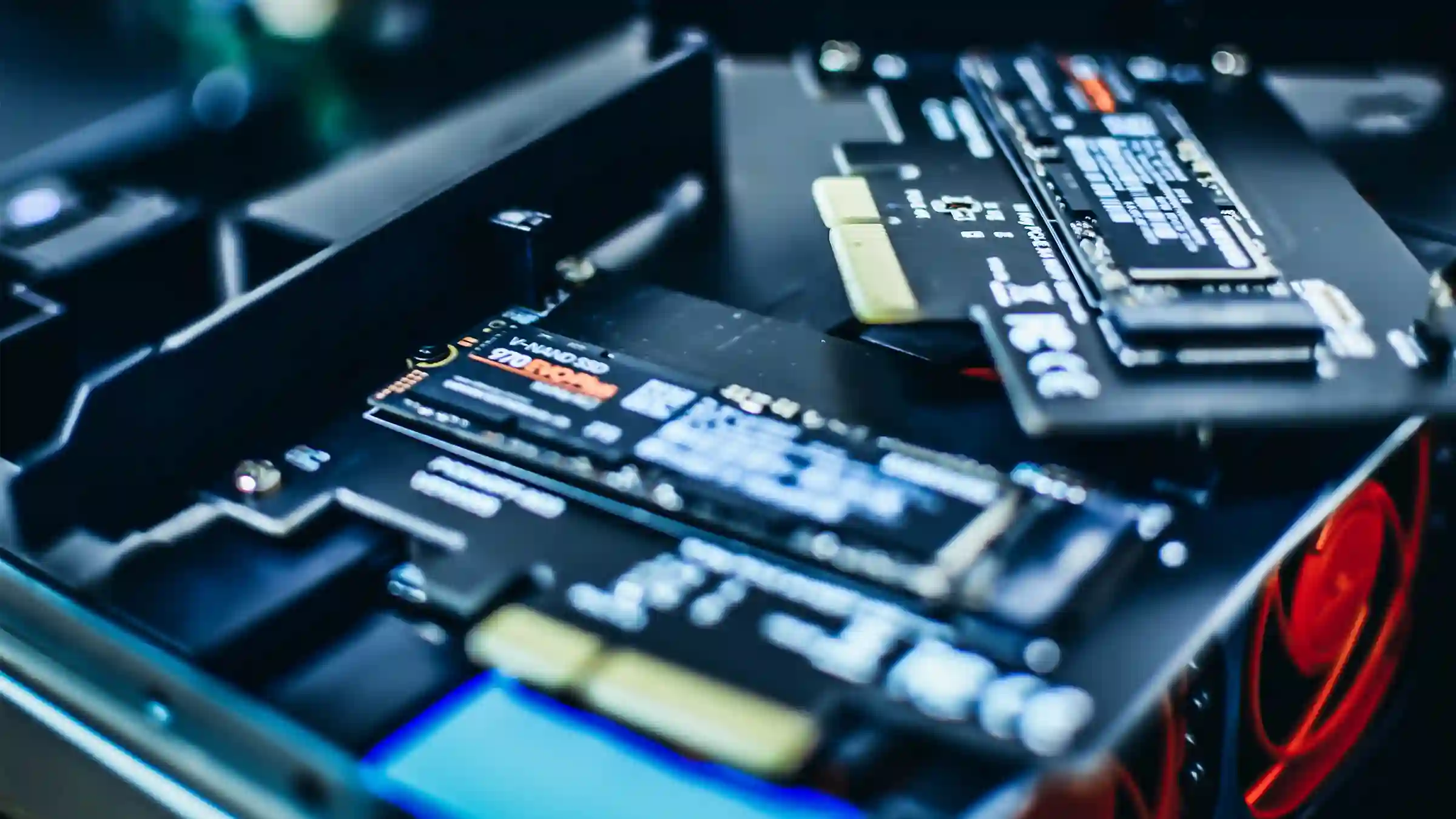IS NVME THE FUTURE OF SSD TECHNOLOGY?

NVMe technology has gained popularity in recent years among data centers and businesses due to its faster and more efficient performance compared to older SSD technologies like SATA and SAS. This is because NVMe has a higher data transfer rate, which is crucial in today’s fast-paced digital world.
GROWING POPULARITY FOR NVME
The rise in popularity of NVMe drives reflects the growing need for speed in handling data. As the amount of information being handled increases, we need advanced technology to keep up with the growing volume of data being transferred, received, and processed.
NVMe is becoming a more popular choice in storage drives as it is able to handle the large amount of data being processed today. It is faster than other options like SAS and SATA, with transfer rates up to six times and ten times faster respectively. This is due to NVMe having access to 64 data queue channels compared to the single queue of SATA and SAS, which limits the transfer rate to 6Gb/s. NVMe does not have this limitation.
It is clear why more and more businesses are turning to NVMe technology for their IT infrastructure. NVMe drives offer faster data transfer speeds compared to other options, such as SAS and SATA. NVMe technology allows for a higher number of data queue channels, which can increase data transfer rates, making it an attractive option for companies to keep up with the growing demand for data.
It is expected that by the end of 2023, the majority of SSDs used in enterprise data centers globally will be NVMe drives, with a 91% adoption rate. This is a significant shift, as currently there are over 7.2 million data centers worldwide, each housing hundreds to thousands of servers. With such a high adoption rate, it is likely that manufacturers and resellers will shift away from older SSD technologies and toward NVMe in the coming years.
We can observe a change in manufacturers’ focus on NVMe technology. One example is Apple’s MacBook Pro 16, which has entirely moved away from SATA technology and adopted NVMe storage. This shift in direction by big companies towards NVMe could lead to the phasing out of older SSD technologies on both consumer and enterprise levels within the next 10 years.
When considering the options for data storage in servers from popular brands such as Dell, HPE, and IBM, it is important to note that these servers are compatible with multiple types of storage drives including SATA, SAS, and NVMe. With the market trend shifting towards NVMe technology, it is up to the user to decide if upgrading to NVMe is worth it for their specific needs and use case.
WHEN SHOULD YOU CONSIDER USING NVME TECHNOLOGY?
NVMe is a must-have technology for businesses that require quick access to data for smooth operations. Financial institutions are a prime example of this. In the finance industry, even a few seconds of delay in executing orders or retrieving data can have significant consequences. The slower the data transfer between IT infrastructure and user interface, the higher the chances of changes in stock prices or loss of clients due to slow data access.
Businesses that rely on providing top-notch customer services, such as eCommerce, insurance, healthcare, and others, depend on quick access to customer data to maintain their level of service. This means that NVMe is essential for these types of organizations as it provides near-instant access to data, allowing them to serve their customers in a timely and efficient manner.
NVMe technology is crucial for industries that use AI and machine learning, as well as those that rely on high-speed data transfer to prevent bottlenecks. These fields include those that utilize field-programmable arrays, custom integrated circuits, and graphical processing units, as well as any organization that experiences performance constraints with their technology. To minimize the occurrences and effects of bottlenecks in an IT system, it is essential to consider implementing NVMe technology.
However, NVMe is not as widely compatible as SATA or SAS. Most motherboards are compatible with SATA and SAS drives, so your current equipment may be able to work with either SSD. On the other hand, only the newest servers are compatible with NVMe, which means that upgrading to NVMe storage could involve a costly overhaul of your current technology. In such cases, increasing the capacity and speed of your SATA or SAS SSD may be a better solution.
WHAT CAN NVME DO FOR YOU?
It is important to understand the potential benefits of NVMe for your business before making a decision to adopt it. While NVMe can offer advantages in terms of speed and capacity, it may not always be the best option in terms of compatibility and cost-effectiveness for your specific business needs. In terms of business development and futureproofing your technology, NVMe is worth considering:
1. NVMe provides significantly faster data transfer speeds than SATA drives, as it can transfer up to 15.8Gb/s, while SATA is limited to 6Gb/s. Additionally, NVMe also offers faster IOPs (input/output operations per second) through the use of the PCIe interface on the motherboard.
2. NVMe technology also increases the energy efficiency of SSDs by improving performance per watt, resulting in a more productive server and a reduction in power consumption.
3. NVMe technology offers comparable availability to SATA and SAS drives, making them a viable option to consider for enhanced performance and capabilities. As the use of NVMe becomes more widespread and more devices become compatible with it, it is expected to become more prevalent in the market.
When deciding to build or upgrade your IT system, NVMe is a valuable investment to boost the performance of your technology. As the use of NVMe SSDs is on the rise, it seems to be the direction that storage drive technology is heading in the future.
